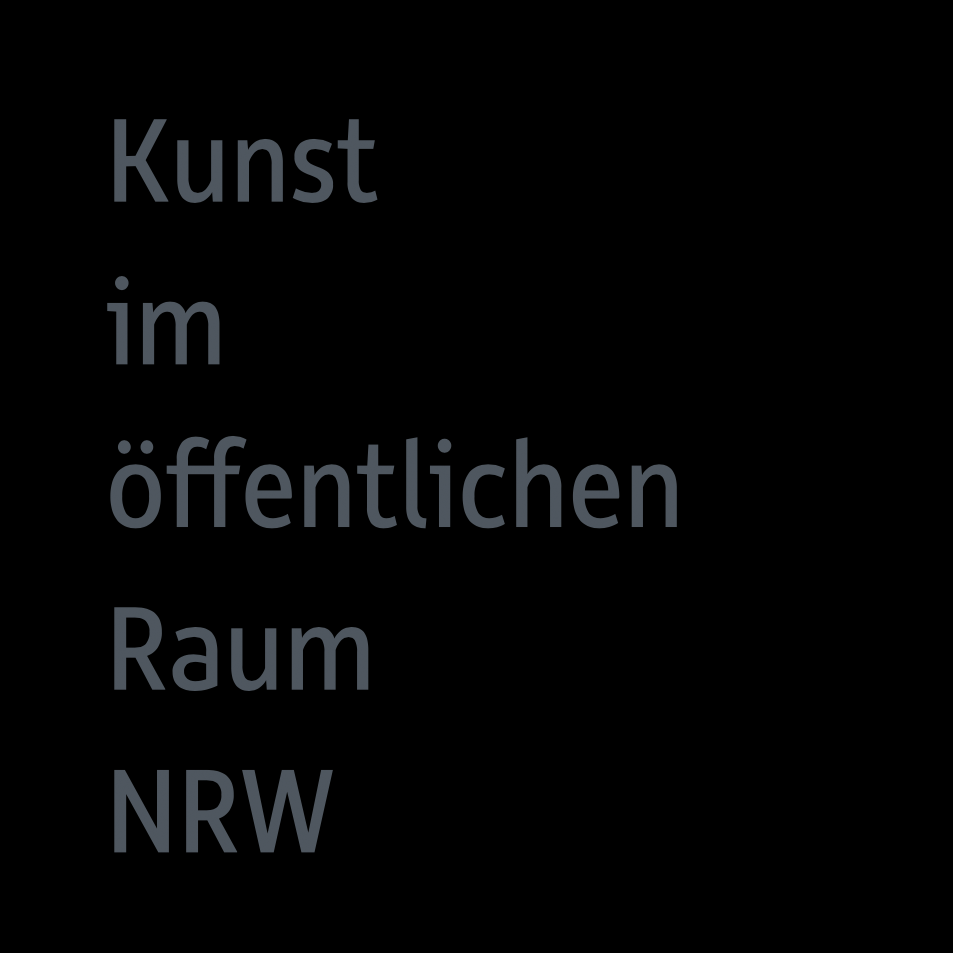Ma´alot


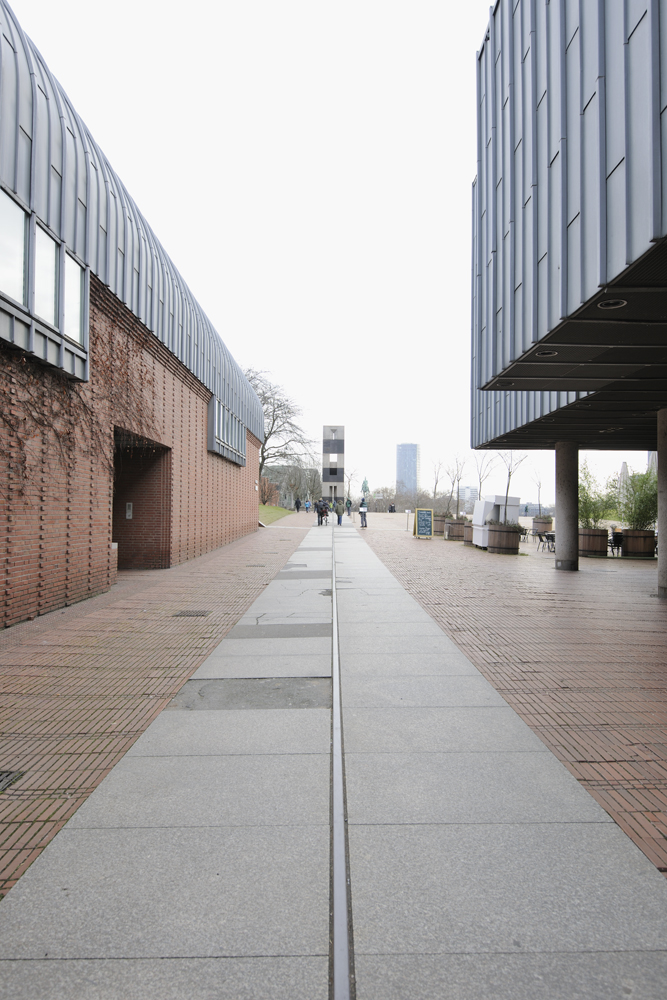
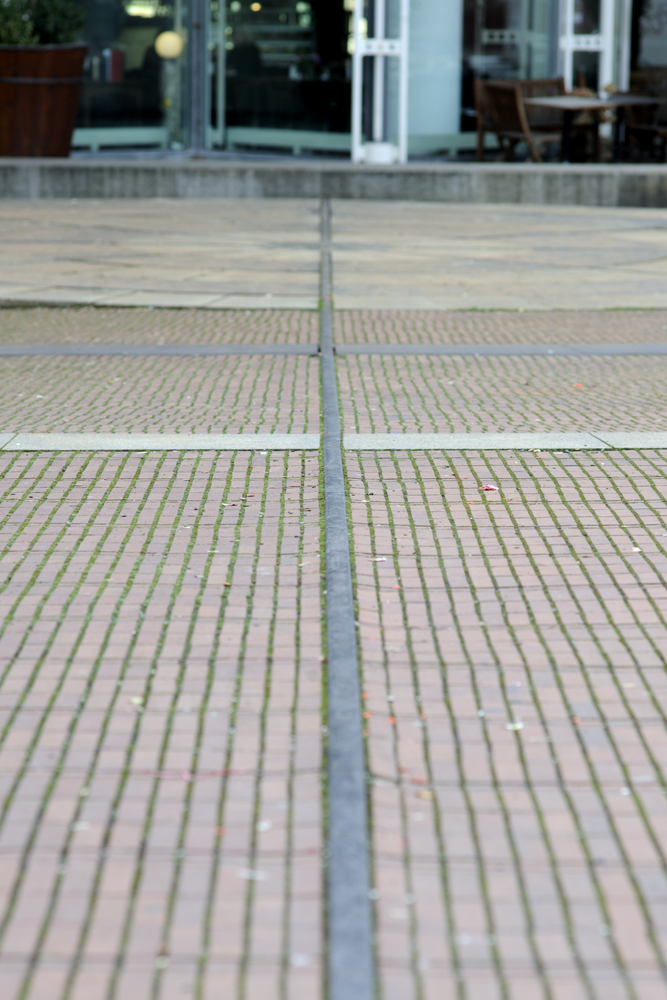
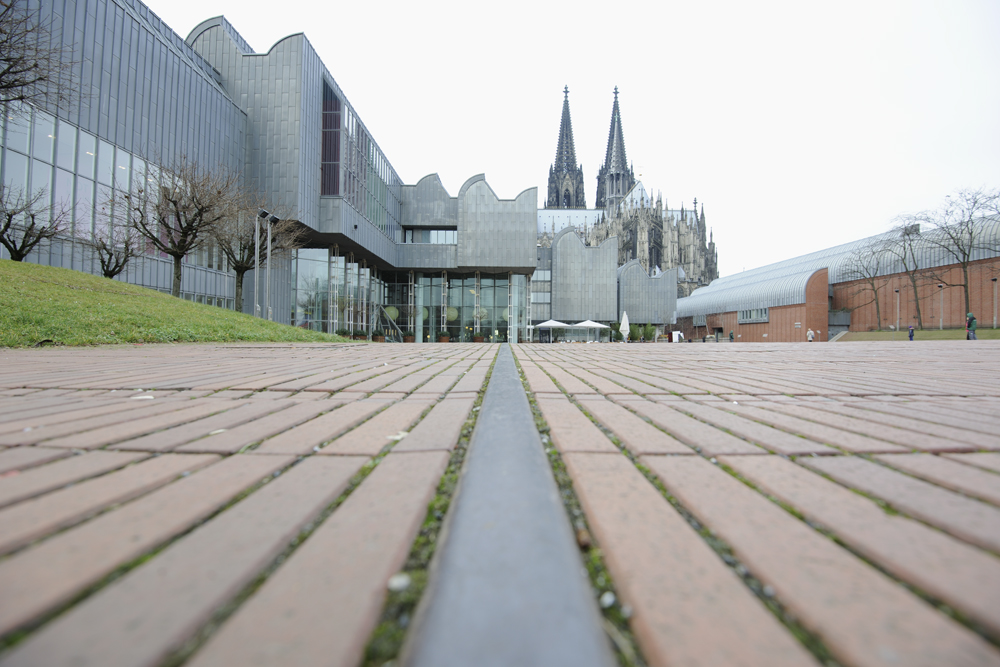

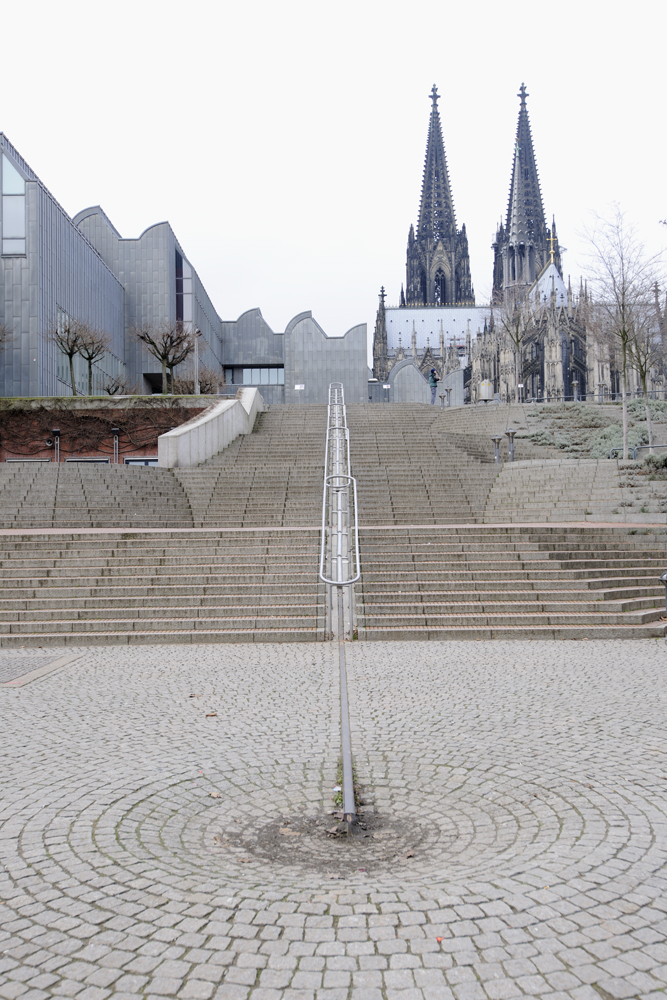

Dani Karavan’s work is located between the Rhine, the Museum Ludwig, and the cathedral. As a Gesamtkunstwerk, the sculpture is made up of multiple different elements. The title Ma´alot is a Hebrew word that refers to psalms 120-134 — the Song of Ascents. In Jerusalem, these psalms are traditionally sung when the priests carry jugs of water up the steps to the temple. The motif of ascending steps repeats several times in the artwork, as it incorporates the stairs that lead up from the Rhine to the square. Furthermore, the central element of the ensemble is a stepped tower. Made up of stacked alternating black and white blocks, it is reminiscent of a throne and a watchtower, and serves as a vertical counterpart to the predominantly horizontal design of the public space.
The artist describes his work as an “environment made out of granite, cast iron, brick, iron and railway track, grass and trees.” It encompasses the design of the square (which also serves as a roof to the Philharmonie), the tower sculpture, the design of the steps, and the planting of six acacia and nine maple trees. Additionally, there are two railroad tracks that cut through the space and contrast the harmonious overall setting. One track points from the cathedral in the west towards Deuz in the east, running parallel to the rails of the Hohenzollernbrücke to the tower-like sculpture. The second rail runs up the steps from the Rhine and cuts across the concentric circles used in the design of the public square.
This Gesamtkunstwerk, which has often been interpreted as a Holocaust memorial, doesn’t offer a clear concrete interpretation of the content. As the artist explains: “The artwork (…) does not have the task of telling a certain story or making certain references. It can only evoke echoes and associations…” He leaves it up to the viewer to place the materials, elements, and title into a context of meaning and sense the spirit of the work.
The square is repeatedly at the center of a variety of discussions within the city of Cologne. In particular, because the Philharmonie does not have sufficient sound insulation and the space must be closed off by security guards every time there is a concert in the building. This measure is cost intensive, but it also leads to unforeseen interpretations of the overall artwork.
Dani Karavan
← Zur Startseite
Cologne, Heinrich-Böll-Platz
